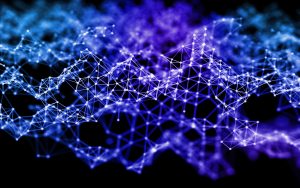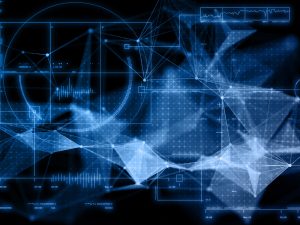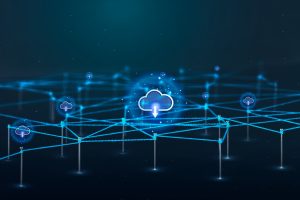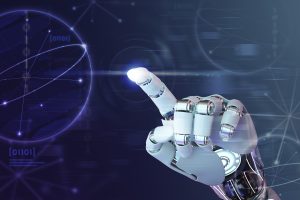Around 90% of the information transmitted to our brains is visual. However, somewhat amazingly, this complex organ can process an image in just a mere 13 milliseconds.
Simultaneously, in today’s era of advanced technologies, the ability to process and analyze visual inputs has also become a critical component of AI-driven innovation.
But what is at the heart of this revolution?
Machine vision and computer vision: two powerful tools with distinct applications and unique benefits. However, while both are integral to intelligent systems, their differences and similarities both define how businesses optimize their operations. In this article, a comprehensive beginner’s guide to understanding these exciting technologies, we’ll reveal how they can harness lucrative revenue opportunities for you – and a wide range of industries.
Beyond Human Sight – Visual AI Technologies in A Nutshell
Underpinned by today’s technological advancements, visual AI technologies such as deep learning training and digital signal processing, enable machines to perform complex tasks that mimic human vision. Each day, these systems are transforming applications in healthcare, agriculture, automotive industries, and industrial automation.
However, leveraging the full potential of machine and computer vision all starts with understanding the subtle nuances between the two.
Machine Vision vs. Computer Vision – Definitions and Key Differences
Machine vision is a branch of engineering focused on capturing and processing images through specialized hardware products. These include video cameras, smart cameras, and other dedicated equipment. And it’s becoming big business, with the machine vision market expected to grow at a compound annual growth rate (CAGR) of 12.7% from 2024 to 2030.
So what are its most common applications? Mostly industrial automation. In this scenario, the tool executes an automatic inspection sequence that enhances quality control and reduces safety risks.
On the other hand, computer vision uses the power of artificial intelligence to interpret visual content. Leveraging advanced algorithms and pre-trained models, it analyzes patterns in video frames, satellite imagery, or medical images. By drawing connections to neural networks and natural language processing, computer vision broadens the scope of applications, tackling tasks like facial recognition technology, semantic segmentation, and object classification. Also growing at an unprecedented scale, the computer vision market is projected to reach $29.27 billion in 2025 and $46.96 billion by 2030
What Are The Key Differences?
- Scope: One of the key differences is that machine vision focuses on structured environments and predefined tasks. On the other hand, computer vision adopts a broader definition, addressing dynamic and complex tasks.
- Flexibility: Machine vision relies on control in manufacturing and industrial settings, whereas computer vision excels in interpreting subtle differences across diverse visual tasks.
- Integration with AI: Machine vision often operates as part of integrated systems with limited AI involvement. In contrast, computer vision thrives on deep learning models and advanced technologies for data interpretation. This part is important to note, so let’s cover it in more detail.
Integration with AI and Machine Learning
The integration of AI amplifies the capabilities of both machine vision and computer vision. For example, generative AI creates synthetic data to enhance machine learning models for image classification and object detection. This extends to:
- Development Tools – AI-driven tools streamline the creation of vision applications and ensure compatibility with hardware products.
- Processing Powers – Combining computing power with digital signal processing allows these systems to handle vast amounts of visual data.
- User Experience – AI advancements elevate the viewing experience, particularly in applications like security surveillance and, more recently, social distancing monitoring.
The Role of Machine And Computer Vision in AI Data Services
Today, machine vision systems have become vital in capturing real-time visual inputs for automated data collection. That’s because – and with minimal human intervention required – these tools can process video cameras and other specialty cameras – all engineered to enable much more efficient operations. Industrial settings benefit significantly from such systems too; especially where dedicated equipment monitors product quality and prevents any potential defects. These systems support industrial equipment and robotic systems, enhancing productivity whilst, most crucially in today’s climate, reducing any associated costs.
Computer vision also plays a pivotal role in creating efficiencies. In AI data services, computer vision performs intricate analyses of visual inputs, transforming raw data into actionable insights. In medical diagnostics, it’s now being used to identify anomalies in X-ray images and other medical images with unmatched precision. Computer vision has key applications in the agricultural sector too. These include crop health monitoring, and utilizing content-based image retrieval to interpret satellite imagery. But this is just the tip of the iceberg for these technologies when it comes to their real-world impact on today’s businesses.
Real-world Applications AI Data Services
Seamlessly automating complex tasks, both machine and computer vision enables global industries to innovate and improve their business processes. Today, their applications are already far-reaching and include:
Industrial Automation
Machine vision excels in automated quality standards checks and robotic guidance. These applications ensure 100% precision and consistency in industrial settings – scenarios where accuracy is paramount. Today, integrated systems create a seamless coordination between hardware and software, minimizing downtime and enhancing efficiency. This is one significant reason why the global industrial automation market is projected to reach $395.09 billion by 2028; growth driven in part by advancements in machine vision technology.
Healthcare
Elsewhere, computer vision is revolutionizing applications in healthcare by analyzing medical diagnostics with unparalleled accuracy. By quickly interpreting facial expressions and other areas of the human anatomy, these systems seamlessly detect signs of illness or distress. Significantly reducing diagnostic errors, this vastly improves patient outcomes. Demonstrating a remarkable transformative impact, the global computer vision in the healthcare market is expected to grow at a CAGR of 47.2% by 2030.
Agriculture
As we touched upon earlier, applications in agriculture are utilizing smart cameras and advanced algorithms to monitor crop health and optimize yields. But these tools also predict any potential risks, providing farmers with real-time insights that help with decision-making and more sustainable resource management. Vital when, on average, farmers estimate their incomes have reduced by 15.7% due to climate change in the past two years. But AI technology can be a catalyst for change; impressively, the agricultural AI market – including modernized farming practices like computer vision solutions – is estimated to surpass $4 billion by 2026.
Automotive Industries
Finally, from self-driving cars to road safety systems, computer vision plays a key role in interpreting traffic lights, traffic signs, and road conditions. Its innovative object classification capabilities ensure accurate navigation, reducing accidents and improving public safety. This is why the autonomous vehicle market; a sector heavily reliant on computer vision for navigation and safety; is anticipated to grow to $2.1 trillion by 2030.
But the question is: what are the upsides and potential drawbacks of this cutting-edge technology for your business?
Business Benefits Of Using Visual AI in Data Services
There’s no doubt about it, by adopting visual AI technologies, businesses can benefit from a sizable competitive edge – especially when streamlining operations and unlocking previously hidden revenue opportunities. The key advantages include:
- Real-Time Insights – Visual inputs processed by machine vision systems provide businesses with actionable intelligence, vastly reducing delays.
- Enhanced Efficiency – By automating common features such as quality control and object detection, companies can also expect to achieve much greater productivity.
- Cost Savings – Lastly, minimizing the need for human intervention in industrial settings inevitably lowers operational costs.
However, while this all sounds good, we’d be remiss not to mention this type of technology does come with its own set of obstacles.
Business Challenges When Implementing Visual AI for Data Services
While the benefits are compelling, implementing visual AI solutions involves challenges like:
- Technical Complexity – Systems managing a larger machine require significant computing power and sophisticated development tools. And this just isn’t always manageable for every business.
- Data Privacy – Ensuring the security of sensitive data, especially in applications like facial recognition technology, remains a priority. This is vital to consider when 89% of consumers have concerns about AI impacting identity security.
- Integration – Last but by no means least, aligning visual AI systems with existing business processes can be daunting – especially without expert guidance.
Don’t worry, that’s where we come in.
How EC Innovations Can Help
At EC Innovations, we provide tailored AI data services to meet your specific needs. Our solutions cover a wide range of visual AI technologies – from quality cameras for data collection to advanced tools that enable deep learning training. With years of expertise in machine vision, computer vision, and related domains, we:
- Enable seamless integration of intelligent systems into your business processes.
- Offer customized solutions to optimize visual tasks like image classification and object detection.
- Ensure superior customer service by supporting your transition to advanced visual AI systems.
Our global reach and cutting-edge technologies make us the ideal partner for any business looking to harness the power of visual AI.
Conclusion – Decoding Visual Data, Today And Tomorrow
Machine vision and computer vision are fundamentally reshaping global industries as we know it.
These tools are automating tasks, improving accuracy, and driving efficiency for businesses willing to embrace what this type of tech can offer. From healthcare and agriculture to manufacturing and automotive, their impact is both wide and transformative. Although relatively formative in its life, businesses leveraging these intelligent systems are already gaining a significant competitive edge – whether it’s streamlining their operations or uncovering new revenue streams.
Here’s a snapshot of everything you need to know about these two powerful tools:
| Aspect | Machine Vision | Computer Vision |
| Definition | Focuses on capturing and processing images using dedicated equipment like video cameras and smart cameras. | Leverages AI and deep learning to interpret and analyze visual content for complex visual tasks. |
| Scope | Operates in structured, predefined environments, primarily for industrial automation. | Tackles dynamic and diverse tasks with a broader definition of visual interpretation. |
| Flexibility | Optimized for specific, repetitive tasks like quality control and automated inspection sequences. | Excels in analyzing subtle differences across varied applications, such as facial recognition and semantic segmentation. |
| Integration with AI | Limited AI involvement, typically integrated into hardware-focused industrial systems. | Heavily reliant on AI, machine learning models, and advanced algorithms for data analysis. |
| Key Applications | Quality control, robotic systems, and control in manufacturing processes. | Medical diagnostics, agriculture, autonomous systems, and content-based image retrieval. |
| Technology Base | Relies on hardware products like dedicated equipment and smart cameras. | Powered by neural networks, deep learning training, and AI-driven technologies. |
| Human Intervention | Minimal human intervention is required during automated processes. | Designed to perform tasks traditionally requiring human vision, reducing human involvement. |
| Common Features | Automatic inspection sequence, real-time monitoring, and industrial equipment optimization. | Advanced visual tasks, such as image classification, object detection, and natural language processing integration. |
| Processing Power | Optimized for processing visual inputs in controlled industrial settings. | Requires significant computing power for large-scale visual data processing and interpretation. |
However, this only covers where things stand today. Tomorrow’s technology will undoubtedly bring cutting-edge developments and compelling new use cases.
Looking ahead, visual AI technologies are poised to redefine the future of AI-driven data services. In particular, emerging advancements in generative AI and semantic segmentation are expanding the range of applications across all industries; innovations like facial recognition in retail and automated inspection in manufacturing are just some of the ways businesses and their customers benefit from these systems. And with demand for this tech projected to grow exponentially, there’s no better time to embrace the change than now.
EC Innovations is at the forefront of this evolution, offering tailored AI data services that integrate cutting-edge visual AI technologies. With expertise in machine vision, computer vision, and deep learning training, we empower businesses to harness the full potential of these advanced technologies. By partnering with us, you can navigate the complexities of implementation, achieve superior customer service, and position your organization for success in this rapidly evolving landscape – no matter what comes next.





